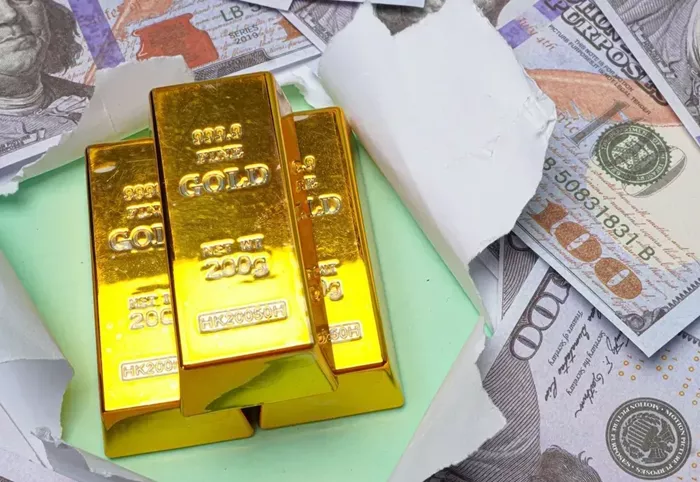At this year’s New Orleans Investment Conference, panelists explored the dynamic forces shaping the precious metals market, with a particular focus on gold and silver. The discussions ranged from theories on gold’s value to price predictions for the future of both metals.
Reciprocal Gold Theory: Gold as a Mirror of Economic Confidence
One of the central themes raised was reciprocal gold theory, which posits that gold’s value is intrinsically linked to the stability or instability of fiat currencies. According to the theory, as trust in fiat currencies diminishes—due to factors like inflation, excessive debt, or poor monetary policy—the value of gold tends to rise. Essentially, gold serves as a reciprocal measure of the financial system’s health.
Calandra, a key proponent of this theory, emphasized that gold would eventually “pay back” the gains seen in blue-chip stocks, suggesting that, while stocks rise, gold remains undervalued. He questioned when investors would increase their gold allocations from 1% to 2-3%, highlighting a potential shift in investment trends as confidence in traditional stocks falters.
North American Gold Culture vs Global Trends
A key difference between North American investors and those in other parts of the world was also discussed. While gold holds a strong cultural and financial significance in countries like India and Turkey—where gold is commonly owned in the form of jewelry, coins, or dishware—North American investors typically hold less gold. Dana Samuelson, president of American Gold Exchange, pointed out that gold ownership tends to rise in countries with histories of war or currency failure, underscoring gold’s role as a hedge against systemic risk.
Rich Checkan, president of Asset Strategies International, added that while the media celebrates stock market highs, these are often nominal gains measured in what he called “worthless” U.S. dollars. In contrast, when measured against gold, Checkan argued that the market hasn’t truly reached new highs.
The Silver Market: Short Positions and Potential for Growth
Silver also took center stage in the discussion, particularly in relation to the massive short positions in paper silver held by institutions like JPMorgan Chase. These positions involve large-scale bets against the metal’s price using financial derivatives, rather than physical silver, and critics argue they can artificially suppress prices.
Avi Gilburt, founder of Elliott Wave Trader, predicted that institutions like JPMorgan would eventually cover their shorts, citing a historical pattern where silver often spikes at the end of market cycles, as seen in 2011 when silver reached an all-time high of $48.12 per ounce.
Gilburt uses the KISS (Keep It Simple, Stupid) method for market analysis, suggesting that markets tend to peak when investors become overly bullish and bottom out when sentiment turns excessively bearish. He applies Fibonacci and Elliot Wave structures to gauge these turning points.
Measuring Gold’s Purchasing Power
Another recurring theme was gold’s purchasing power, often measured through the gold/silver ratio. Calandra noted that historically, an ounce of gold has consistently been enough to purchase a good-quality suit, reflecting gold’s steady value over time.
Samuelson introduced an alternative metric, the gold/oil ratio, as another means to gauge gold’s real-world purchasing power.
The Paradox of US Dollar Dominance
Deist also discussed the paradox of the U.S. dollar’s role as the world’s reserve currency. While countries need dollars for trade, which prevents a short-term collapse of the dollar, there is increasing long-term pressure for alternatives due to U.S. deficit spending and inflation. This scenario, Deist suggested, could potentially benefit gold in the long run, especially in the context of a west-to-east shift in global wealth.
Price Predictions for Gold and Silver
The panelists offered varying predictions for gold and silver prices over the next few years:
Calandra forecasted that gold could reach $3,000 per ounce by the end of 2024.
Samuelson was more conservative, predicting a consolidation phase with gold trading between $2,650 and $2,750 by year-end, though he suggested gold could rise to $3,500 by 2025. He also projected silver could reach $40 to $45 per ounce.
Gilburt expects a final push higher for gold before a multi-month consolidation. After that, he believes gold could reach $3,300 to $3,400.
Checkan anticipates gold could rally to $3,800 by the end of the current bull market, following a pattern seen in past bull cycles.
Ayales was even more optimistic, predicting that gold could reach $4,000 by 2025, similar to the parabolic rise seen between 2000 and 2011.
In contrast, Deist refrained from offering a specific price target but suggested that gold’s value could be supported by a significant shift in wealth from the West to the East.
Conclusion
As experts debate the future of gold and silver, it’s clear that precious metals remain a critical hedge against economic uncertainty. Whether driven by the instability of fiat currencies, the evolving global financial landscape, or shifts in investor sentiment, the role of gold and silver in portfolio diversification continues to grow in importance. The coming years may see both metals reach new highs, but the exact trajectory remains subject to the forces of geopolitics, market cycles, and broader economic trends.
Related Topics:
- Caution Urged for Gold Investors Amid High Macro Fund Positioning
- UBS Analysts Remain Bullish on Gold, Forecast Prices to Reach $3,000 by 2025
- Silver Prices Hold Steady Amid Market Fluctuations


